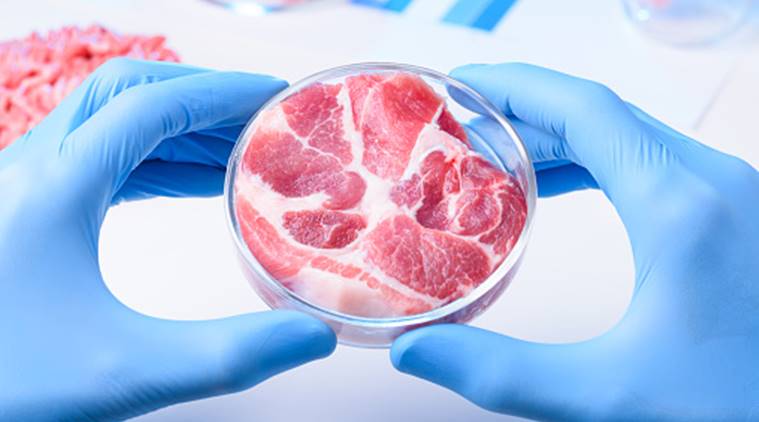
Imagine chomping on a juicy chicken patty that was made without killing animals. This is what the future of the meat industry may look like. In a bid to promote ethical consumption of meat and clean environmental and sustainable practices, the concept of lab-grown meat has taken shape.
According to a report in the Scientific American, “Several start-ups are developing lab-grown beef, pork, poultry and seafood—among them Mosa Meat, Memphis Meats, SuperMeat and Finless Foods. And the field is attracting millions in funding. In 2017, for instance, Memphis Meats took in $17 million from sources that included Bill Gates and agricultural company Cargill”.
What is lab-grown meat?
Lab-grown meat is grown in a laboratory with the help of cultured cells. It is made by first taking a muscle sample from an animal and then collecting stem cells from the tissue. The tissue is then multiplied dramatically after which, it is allowed to differentiate into primitive fibres. It then bulks up to form a muscle tissue or lab-grown meat. According to the same report, “One tissue sample from a cow can yield enough muscle tissue to make 80,000 quarter-pounders”.
Advantages of lab-grown meat
If adopted and widely supported, lab-grown meat can promote cruelty-free meat and bring in ethical meat eating practices that do not cause harm to animals. It can also considerably reduce environmental costs of meat production by bringing down rearing and production costs.
Challenges
Although the number of animals affected would be greatly reduced, laboratory-grown meat would still require the use of animals. According to a report in ThoughtCo, “When scientists created the first laboratory-grown meat, they started with muscle cells from a live pig. However, cell cultures and tissue cultures typically do not live and reproduce forever. To mass-produce laboratory-grown meat on an ongoing basis, scientists would need a constant supply of live pigs, cows, chickens and other animals from which to take cells.”
Another challenge of engineering meat in the lab can be trying to manufacture the same texture and taste like regular meat. According to Science American’s report on lab-grown meat, “In 2013, when a burger made from lab-grown meat was presented to journalists, the patty cost more than $300,000 to produce and was overly dry (from too little fat). Expenses have since fallen.”
While techniques and processes are being employed and devised to meet the taste of meat, it remains to be seen if it will be the meat of the future after all.